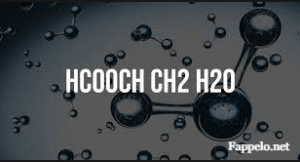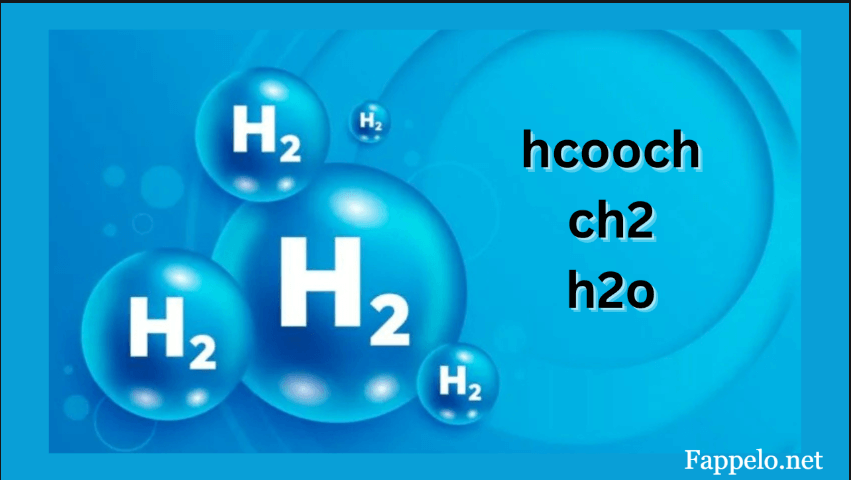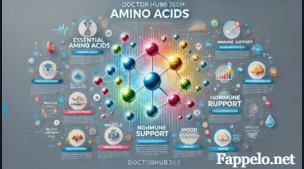Introduction
Chemical reactions form the foundation of countless processes that shape our world. One such reaction, involving HCOOCH and CH2O, plays an important role in organic chemistry. Understanding the chemistry behind this reaction allows scientists and industry professionals to unlock new applications for chemical products and processes. In this article, we’ll break down the components of the HCOOCH + CH2O reaction, explore the chemistry behind the process, and discuss its applications.
What Are HCOOCH and CH2O?

To start, let’s define the compounds involved in the reaction. HCOOCH is the molecular formula for methyl formate, while CH2O represents formaldehyde. Both are organic compounds that serve as key building blocks in the chemical industry.
- HCOOCH (Methyl Formate): Methyl formate is an ester of formic acid and methanol. It is a colorless liquid with a slightly fruity odor. It is used in the production of solvents, fragrances, and as a key component in some chemical reactions.
- CH2O (Formaldehyde): Formaldehyde is a simple aldehyde compound with a strong odor. It is commonly used in the production of resins, plastics, and textiles. Formaldehyde is also a key intermediate in the synthesis of other chemicals.
When combined, HCOOCH and CH2O can undergo a reaction that leads to the formation of new products, depending on the conditions and catalysts used.
The Reaction Between HCOOCH and CH2O
The reaction between HCOOCH and CH2O involves the interaction between methyl formate and formaldehyde, potentially resulting in the formation of acetal compounds or other related products. The specific products formed depend on the reaction conditions, such as temperature, pressure, and the presence of catalysts.
In a typical reaction, HCOOCH (methyl formate) and CH2O (formaldehyde) can undergo an exchange of molecules. This exchange is facilitated by the reaction of the aldehyde functional group of formaldehyde with the ester group of methyl formate. The outcome of the reaction depends on the balance of these functional groups, which can form different types of organic compounds, including:
- Acetals
- Ester derivatives
- Polymeric materials
Mechanism of the HCOOCH + CH2O Reaction
The chemistry behind the HCOOCH + CH2O reaction can be understood through the mechanism of ester and aldehyde reactions. The mechanism typically follows a series of steps:
1. Nucleophilic Attack
In the first step, the carbonyl carbon of the CH2O molecule is attacked by the nucleophilic oxygen atom from the ester group in HCOOCH. This nucleophilic attack breaks the double bond of the carbonyl group, creating an intermediate product.
2. Formation of an Intermediate Compound
The nucleophilic attack leads to the formation of an intermediate compound where both the ester group and the aldehyde group are now part of the same molecule. This intermediate can take various forms depending on the reaction conditions, but it is unstable and prone to further transformation.
3. Protonation and Deprotonation
In some cases, the intermediate compound undergoes protonation, where a hydrogen ion is added to the oxygen atom. This step can lead to the formation of either an acetal or an ester derivative, depending on how the molecule rearranges.
4. Product Formation
Finally, the rearranged molecule undergoes deprotonation, resulting in the final product. The exact nature of the product—whether it’s an acetal, ester, or polymer—depends on the specific reaction conditions and the presence of any catalysts.
Factors Affecting the HCOOCH + CH2O Reaction
The HCOOCH + CH2O reaction is influenced by several factors, which can affect the yield and type of products formed. Some of these factors include:
1. Temperature
Temperature plays a crucial role in determining the outcome of the reaction. Higher temperatures tend to favor certain types of chemical rearrangements, while lower temperatures can stabilize intermediates or products that might otherwise be unstable at higher temperatures.
2. Catalysts
The presence of catalysts can accelerate the reaction and direct it toward specific products. For instance, acid catalysts can facilitate the formation of acetals, while base catalysts may favor ester formation. The choice of catalyst is essential for controlling the efficiency and selectivity of the reaction.
3. Concentration
The concentration of HCOOCH and CH2O can also affect the reaction. Higher concentrations of reactants may lead to an increased likelihood of collisions between molecules, which can enhance the rate of reaction. However, too high a concentration may lead to side reactions or a lower yield of the desired product.
4. Solvent Choice
The choice of solvent can influence the reaction by stabilizing the intermediates or facilitating the interaction between HCOOCH and CH2O. Some solvents may help in breaking the ester bond more efficiently or in forming the desired product more readily.
Applications of the HCOOCH + CH2O Reaction
The reaction between HCOOCH and CH2O is useful in the synthesis of various chemical compounds. By understanding the reaction mechanism and the factors that influence it, chemists can tailor this process for industrial applications. Here are some potential uses of the HCOOCH + CH2O reaction:
1. Production of Acetals and Esters
One of the primary applications of this reaction is in the formation of acetals and esters, which are important in the production of perfumes, flavoring agents, and solvents. The ability to control the formation of these compounds is important for the fragrance and cosmetic industries.
2. Polymer Synthesis
The reaction between HCOOCH and CH2O can also lead to the formation of polymeric materials. These polymers can be used in a variety of applications, including in the production of plastics, coatings, and adhesives.
3. Resin and Plastic Manufacturing
Formaldehyde and methyl formate are both key ingredients in the production of resins and plastics. The HCOOCH + CH2O reaction can be used to create the necessary intermediates for these materials, which are then further processed into a variety of commercial products.
4. Pharmaceuticals and Fine Chemicals
In the pharmaceutical industry, the reaction may be useful for creating intermediate compounds that are further refined into active pharmaceutical ingredients (APIs). The fine chemical industry also uses such reactions to create specialty chemicals for various purposes, such as agriculture or electronics.
Safety Considerations
When working with HCOOCH (methyl formate) and CH2O (formaldehyde), safety is paramount. Both chemicals are volatile and can pose health hazards if mishandled. Proper safety protocols, including working in well-ventilated areas and using appropriate protective equipment, should be followed. Formaldehyde is a known carcinogen, and methyl formate can be irritating to the eyes and respiratory system.
Conclusion
The reaction between HCOOCH and CH2O is a vital part of organic chemistry that leads to the formation of a wide range of valuable products. Whether in the production of polymers, esters, acetals, or specialty chemicals, this reaction offers versatility in its applications. Understanding the mechanisms, factors affecting the reaction, and safety precautions allows chemists to better control and utilize this process for industrial and commercial purposes.
In summary, the HCOOCH + CH2O reaction is an essential reaction in organic chemistry that has practical applications in many industries, including pharmaceuticals, plastics, and fragrances. By understanding the basic principles of this reaction and its many variables, scientists and industry professionals can continue to refine the process and explore new possibilities for its use.



